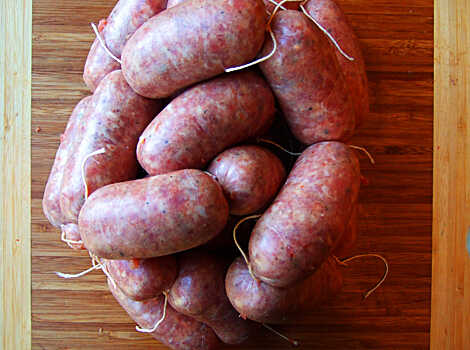
Relação de dicas de ingredientes e procedimentos para produzir boas linguiças caseiras, muito superiores em qualidade e sabor do que as industrializadas. Moer ou cortar com a faca? Usar sal de cura? Que tripa usar? Qual tipo de gordura usar?
Dicas sobre a produção de linguiças caseiras
Moer ou cortar com uma faca?
Moedores de carne caseiros tem a rosca muito pequena, que esmagam a carne deixando uma textura estranha. Discos de moedor com furos muito pequenos também estragam a textura da linguiça. A carne não pode ser moída ou esmagada, ela tem que ter pedaços inteiros. Apenas moedores de grande porte fazem bem esse trabalho. Moedores caseiros geralmente não servem para fazer uma boa linguiça. Para grandes quantidades cortar com uma faca é inviável, mas para produtos caseiros é recomendável utilizar uma boa faca.
Sal de cura, usar ou não usar?
O sal de cura vai deixar a linguiça, depois de assada, com aquele tom rosado típico de produtos curados. Sem o sal de cura a linguiça, depois de assada, ficará com um tom cinza. Além disso o sal de cura vai dar o sabor específico, ajudar na prevenção do ranço e dar mais durabilidade por ter função conservante. Mas, apesar de ser um componente naturalmente encontrado em diversos legumes, há muita controvérsia sobre possíveis ligações com a incidência de câncer. Comercialmente é obrigatório seu uso, mas para produtos caseiros não há obrigação, então cabe a você decidir usar ou não. Para saber mais sobre o sal de cura, leia o post Sal de cura o que é e quanto usar.
Tripa natural ou de colágeno?
A tripa natural tem melhor “mordida”, ou seja, é mais macia e fácil de engolir, mas em contrapartida é mais difícil de trabalhar, pois é mole, estoura mais facilmente e é preciso dessalgá-la antes de usar. A tripa de colágeno tem digestão mais difícil e é mais rígida na hora de morder e cortar, em contrapartida é mais fácil de trabalhar pois vem pronta para usar e não é preciso dessalgar. Particularmente prefiro a tripa natural, pois para produtos caseiros o que vale é a qualidade e não a produtividade. Não use tripas de celulose, sintéticas ou fibrosas pois não são comestíveis.
Que gordura usar para fazer linguiça?
Tanto para linguiças quanto para qualquer embutido o ideal é usar a gordura rígida, como a subcutânea. Nos suínos essa gordura é abundante na barriga, que é muito utilizada para fazer o bacon. Ao comprar uma peça de pernil, por exemplo, a gordura rígida estará entre a pele/couro e a carne. Remova cuidadosamente a pele, corte a gordura em cubos e guarde-a no congelador. O ideal é incluir essa gordura bem no final do processo, pouco antes de embutir, pois quanto mais gelada menor será a chance de derreter durante a produção.
Leia também:
-
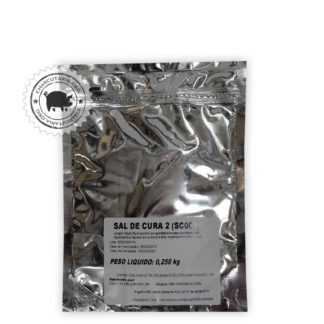 Sal de cura 2R$ 8,00
Sal de cura 2R$ 8,00 -
 Sal de cura 1R$ 8,00
Sal de cura 1R$ 8,00 -
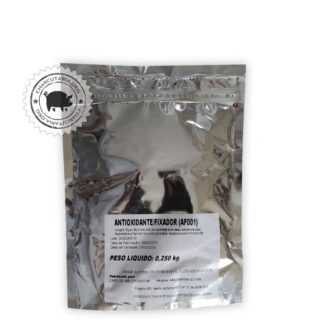 Antioxidante FixadorR$ 23,00
Antioxidante FixadorR$ 23,00 -
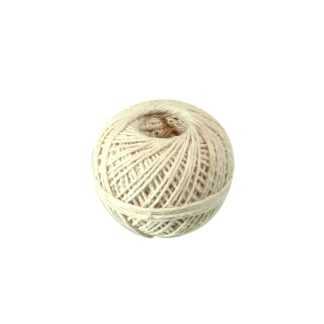 Barbante culinárioR$ 7,90
Barbante culinárioR$ 7,90 -
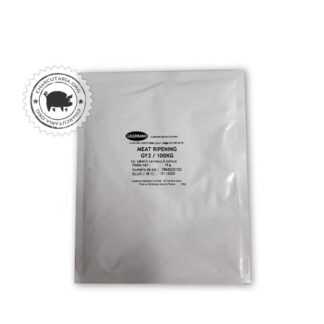 Cultura StarterO preço original era: R$ 69,90.R$ 59,90O preço atual é: R$ 59,90.
Cultura StarterO preço original era: R$ 69,90.R$ 59,90O preço atual é: R$ 59,90. -
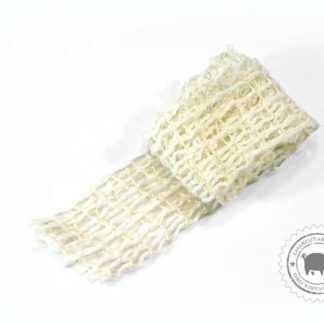 Rede elástica culinária 50mmR$ 15,00
Rede elástica culinária 50mmR$ 15,00 -
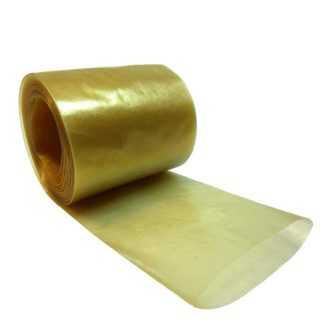 Tripa de colágeno 45mm rolo 5 metros salameR$ 25,00
Tripa de colágeno 45mm rolo 5 metros salameR$ 25,00 -
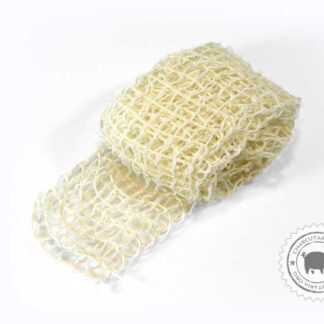 Rede elástica culinária 65mmR$ 18,00
Rede elástica culinária 65mmR$ 18,00 -
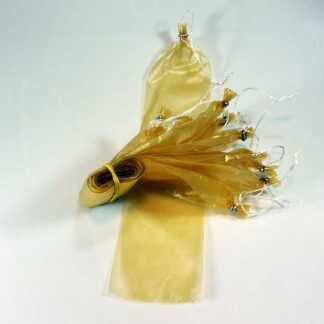 Tripa de colágeno salame 45mm 10 unidades amarradasR$ 22,00
Tripa de colágeno salame 45mm 10 unidades amarradasR$ 22,00 -
 Tripa de colágeno 80mm copa e salameR$ 29,90
Tripa de colágeno 80mm copa e salameR$ 29,90 -
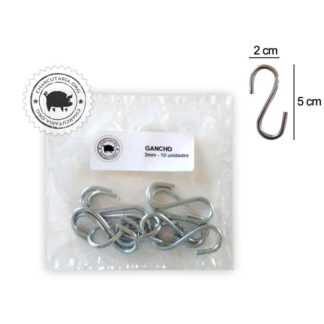 Gancho GalvanizadoR$ 12,00
Gancho GalvanizadoR$ 12,00 -
 Tripa de colágeno salame 50mm 10 unidades amarradasR$ 24,00
Tripa de colágeno salame 50mm 10 unidades amarradasR$ 24,00


Li todos os 156 comentários e obtive mais informações do que do curso que comprei de um outro site, conteúdo riquíssimo.
Obrigada
Qual curso vc comprou e gostou?
gostaria de começar a fazer linguiça, para consumo próprio e futuramente para vender por encomenda, qual moedor de carne você me indicaria(que não fosse com valor muito elevado), obrigado
Bom dia, a salsicha de pernil e panceta ficou dura e ressecada coloquei paprica, sal, sal de cura comprei com vcs, foi o moedor menor?Teria que ser o maior,o que faltou na receita?
obrigada desde ja
Olá, Dib. Geralmente quando a linguiça fica seca, quebradiça, significa que a moagem foi problemática, esmagou a carne ao invés de cortar. Carnes moídas em discos muito finos, tipo carne moída para panela, são ruins para linguiça, ficam desta forma que citou. O que recomendo é testar fazer uma linguiça cortando a carne em pedaços pequenos usando uma faca bem afiada. Desta forma poderá comprovar a diferença no resultado final.
Olá. Boa noite. Quero ingressar no ramo de linguiças artesanais, mas tenho uma dúvida ( e acho que é a da maioria das pessoas). Quanto é a validade máxima de uma linguiça artesanal embalada à vácuo? Quais produtos deve usar para animar o prazo de validade?
Obrigado!
Faça uso do sal de cura e de um antioxidante, além disso embale a vácuo. As validades serão similares às linguiças dos frigoríficos grandes que encontra nos mercados, faça uma consulta e use como referência para estimar o prazo de validade dos seus produtos.
boa tarde,estou iniciando na fabricação de linguiça para o consumo da minha familia..tenho gostado muito do resultado. tive dificuldade de ensacar com tripa de cordeiro….hidratei bem e tal,mas elas vem muito furadas e arrebentam com facilidade… isso é normal …tem alguma dica? desde já muito obrigado!!!!!!!!!!
A tripa de cordeiro é a mais macia e frágil, então é preciso embutir sem muita pressão, mas furadas não é o correto, elas tem que vir sem furos.
ola, iniciei agora, fiz a segunda vez, a primeira na faca, 5 kg, a segunda moedor eletrico boca 8 com disco medio ( não trenho certeza se é 8 ou 10 mm) achei que ficou muito moida e a linguiça ficou sem umidade ideal depois de assada, muito savborosa mas sem umidade, duas perguntas, que disco seria ideal para moer no moedor eletrico 10, 12 ou rim ? e o que devo fazer para nao faltar umidade pois usei 20 % de gordura mas moi junto com a carne e misturei na massa … moer e reservar a gordura para incluir na massa na hora de embutir quem sabe ? agradeço imensamente …
Oi Valcir. Os moedores menores, que tem a rosca infinita(caracol) muito estreito, podem esmagar a carne na passagem pelo duto. Ao esmagar, a estrutura da proteína muitas vezes sofre danos e a carne perde a capacidade de reter umidade. Então mesmo acrescentando mais água ou gordura a linguiça fica mais quebradiça, com a carne seca. O ideal é um moedor com a boca(duto de passagem) mais largo. O disco de corte também influencia, entre 8mm e 12mm já está bom. O problema acho que é o duto(diâmetro da boca do moedor). Para tentar contornar, corte a carne em pedaços menores antes de moer. Além disso, refrigere bem, quase congelando a carne, desta forma ela tende a ser menos esmagada na passagem pela rosca. Outra coisa é a lâmina de corte, afie ela bem, passe em uma pedra de amolar, tanto a faca quanto o lado do disco que fica em contato com a faca. Acredito que assim já tenha um resultado melhor em suas linguiças.
Grande Eduardo…tudo bem? olha eu aqui novamente..
Amigo, estou vendendo minhas linguiças seguindo suas dicas, muito obrigado irmão!
Meu moedor é de boca 8 tbm, bem pequeno, inclusive, uso para embutir, essa dica de passar o disco na pedra vou testar da próxima vez, pois quando vou moer 20 kg de carne e gordura ele embucha muito ai tem que ficar limpando umas 4 ou 5x durante a moagem!
Oi Hugo, amolar bem o disco e a faca deve ajudar. Realmente nos moedores menores o tecido conjuntivo fica prendendo e acaba estreitando a passagem da carne, que pode sair esmagada. Fico feliz em saber que está vendendo bem. Logo vai ter que investir em um moedor mais parrudo. Um canhão separado também é bem mais eficiente. Um grande abraço!
Com certeza, o próximo passo é um canhão, pois sinto falta na hora de embutir linguiças recheadas com queijo principalmente, a rosca sem fim esmaga os pedaços e não fica tão legal…
Grande Eduardo, tudo bem amigo? Produzi 20 kg de linguiça essa semana…que trabalheira!!!! rsrsrs..porém muito gratificante!
amigo, estou com dificuldade de usar aquele corante carmim da cochonilia!
Comprei em pó, ai dilui em 2 litros de água e 500g de açúcar conforme orientação do fabricante…mas a carne ta ficando marrom e não rosa…to usando 1 ml por kg..
tem alguma dica pra me passar amigo?
Obrigado!!
Oi Hugo, parabéns! Realmente dá bastante trabalho, mas é satisfatório e recompensador. O carmim geralmente é bem forte, com um vermelho bem intenso, pouca coisa já resolve, não sei como pode ter ficado marrom. Uso sempre o líquido, então infelizmente não sei te orientar sobre o uso desse em pó.
Entendi…talvez possa ser o alho natural oxidando a carne? Já que não uso nenhum antioxidante…acho que vou tentar com alho em flocos…o que vc acha?
Pode testar sim. Usou o sal de cura? Qual a carne utilizada, apenas suína ou mista com bovina?
Usei sim, somente o sal de cura 1, usei paleta suína com toucinho!!!
E na de frango usei tbm o cura 1, cortes de coxa com sobrecoxa com pele e um pouco de peito!
Eduardo, boa noite! com relação ao uso do sal de cura 1, estou usando o da marca CONATRIL, com 93% sal e 7% nitrito de sódio, tenho usado a recomendação de 2,14g por kg de massa cárnea recomendado aqui pela calculadora do site. A minha questão é, o vendedor orientou a usar 10g por kg, achei muita coisa, não fiz teste e segui a calculadora aqui do site! O que vc acha dessa quantidade? 10g é aceitável, é muito…mantenho os 2,14 ou uso 10, ou uso o 2,5 que é o que diz a maioria das receitas…dúvidas e mais dúvidas!
Abraço!
Oi Hugo. Pela composição deste sal de cura eu usaria entre 2g e 3g por kg de massa cárnea. Colocar 10g eu considero muita coisa, vai ficar com muito nitrito residual no produto final. Não há necessidade de tanto. A calculadora de aditivos mostra o mínimo a ser adicionado, pode colocar um pouco a mais, então até 3g acho bem razoável.
Mais uma vez, excelente nos comentários! Muito obrigado, tem me ajudado muito!!!
Oi Eduardo, boa noite! só queria deixar claro aqui minha gratidão pelo conteúdo! Nunca fiz linguiça na vida, e seguindo seus conselhos, usando a calculadora para acertar no sal de cura, ontem fiz minha primeira produção de linguiça de pernil com queijo coalho e frango com alho poró e queijo coalho!!! Ficaram excelentes!!! Mas achamos que ficou um pouco seca, seria talvez por que não usei água na massa? Qual seria a proporção ideal de água por kg? tenho visto no youtube algo em torno de 150 ml por kg de massa! Procede?
Forte abraço
Oi Hugo, fico feliz em saber que iniciou na charcutaria e que o conteúdo tem ajudado! Pode deixar a linguiça mais úmida acrescentando água(150ml por kg está bom) em conjunto com um mix rendimento, que ajuda na absorção e retenção dessa água. Outra alternativa é mudar a proporção de carne/gordura, aumentando a quantidade gordura. No caso das linguiças de pernil, pode colocar uma parte de barriga/toucinho. No caso das linguiças de frango pode moer um pouco de pele junto. Espero ter ajudado. Um grande abraço!
Na de frango usei um pouco de gordura do bacon, que deu suculência, e a de pernil faltou um pouco de gordura msm…a água teria ajudado bastante nos dois casos!! Nas próximas remessas vou colocar água e acertar a gordura, quero fazer a linguiça mais artesanal possível, usando apenas o sal de cura como conservante!!!
Qual a tripa, calibre e comprimento ideal para fazer linguiças artesanais recheadas com queijo, de 500g, evitando que a tripa estoure e melhorando o rendimento/desperdício da tripa?
Como faço pra somar os ingredientes de linguiças. Para temperar quantidade maior exemplo 100 kg
Use sempre os condimentos em porcentagens sobre o peso da massa cárnea(carne+gordura). Por exemplo:
2% de sal (20g para 1 kg de massa)
0,24% de sal de cura (2,4g para 1 kg de massa)
0,24% de antioxidante
0,5% de açúcar
0,5% de alho
0,3% de pimenta
Oi Eduardo, tudo bem? Parabéns pelo excelente conteúdo! Estou começando a ler sobre a fabricação de linguiças artesanais para fazer em casa e vender quando acertar a mão! esses valores em percentual são uma conta básica para qualquer receita, ou mudam de acordo com o tipo de proteína utilizada na linguiça?
O percentual é uma referência base para poder adequar ou personalizar conforme a sua receita. Use como um guia.
Fala meu amigo, olha eu aqui novamente sugando seu conhecimento…rsrsrs
O que vc acha dos cortes da palheta e papada para produção de linguiças suinas?
Grato pela colaboração!!!
Oi Hugo. A paleta é bem comum de ser usada em linguiças, já a papada é menos utilizada, mas é uma boa fonte de gordura para misturar e equilibrar a proporção carne/gordura. Creio que 80/20 paleta e papada seja uma boa proporção e terá um ótimo resultado.
Bom dia,
A liguiça fica muito boa, porém quando as aço eles ficam meio esfarelentas, como evitar isso?
Desde já agradeço.
A moagem da carne pode estar muito fina, o moedor pode estar esmagando a carne e estragando a textura, outra possibilidade é que esteja trabalhando pouco a massa, não dando tempo para ela criar a “liga” necessária para uma boa aderência entre os pedaços de carne. MAs creio que o problema seja no moedor. Teste fazendo algumas cortando a carne com uma faca ao invés de moer.
Olá, gostaria de tirar um dúvida, ao terminar a fabricação de uma linguiça artesanal, seja ela de carne suína, frango ou bovina (de produto químico será usado apenas o sal de cura 1), a linguiça deve ser pendurada por um tempo (qual teria que ser esse tempo, teria que ser na sombra ou próximo de alguma fonte de calor) ou já pode ser congelada na hora?
Oi Ederson, o ideal é aguardar, pelo menos, 12 horas em ambiente refrigerado para dar tempo do sal de cura iniciar a conversão, depois pode preparar, congelar ou manter refrigerada por mais tempo até o consumo. Não é recomendável pendurar próximo a uma fonte de calor.
Eu posso já deixar a linguiça embalada, seja a vácuo ou bandeja com plastico filme, na geladeira aguardando esse período para iniciar o processo do sal de cura? Posso deixar esse processo por 24 horas ou 12 horas seria mais recomendado? E por quanto tempo aproximadamente posso manter ela congelada? Desde já agradeço muito o retorno. Parabéns pelo trabalho, muito importante essa ajuda principalmente pra quem está começando como é o meu caso!!!
Sim, já pode embalar durante esse prazo. Congelada vai durar por volta de 3 meses.
Bom dia! Estou produzindo linguiça somente para consumo e utilizo aqueles moedores manuais mesmo. A linguiça está saborosa e com aspecto bonito, mas depois de alguns dias ao fritar percebo a linguiça mais seca e dura. Utilizo em media 15 a 20% de gordura dependendo de como está o pernil (mais gordo ou magro). O que pode estar acontecendo para deixar a linguiça mais seca e dura com o passar dos dias?
Oi Alex, talvez seja problema no armazenamento, elas podem estar secando e/ou escorrendo muito líquido. Tente armazenar em sacos plásticos bem fechados ou no vácuo. Outra coisa é que se utilizar algum emulsificante/estabilizante as linguiças tendem a manter mais umidade.
Eduardo, Obrigado pelo pronto retorno.
Na receita que utilizo vai água gelada para ajudar na emulsificação e só utilizo sal de cura como aditivo. Acabei fritar um pedaço e percebi que em certo momento começa a soltar água no processo de fritura que com certeza está colaborando para o ressecamento. Com relação a quantidade de gordura está dentro do recomendado, ou seja, em torno de 15 a 20%?
Essa linguiça que acabei de fritar foi uma que pre defumei. Vou fazer um novo teste como ela fresca na próxima produção para ver se apresenta o mesmo sintoma.
Obrigado por enquanto!
Oi Alex, 15 a 20% de gordura está ótimo. Teste fazer uma linguiça com a carne cortada na faca ao invés de moída. Veja se apresentará diferença significativa na suculência depois de assada/frita. Se quiser testar um aditivo adicional que ajuda a segurar a umidade, use um produto como este: https://charcutaria.org/produto/emulsificante-estabilizante-carneo-embutidos-rendimento/
Se for defumar, tente fazer com a temperatura mais baixa que puder.
.
Se eu fizer linguiça sem sal de cura posso congelar e quanto dura
Pode congelar, dura por volta de 3 meses.
ola pessoal…fui comprar curso de linguiças…19,90….na hora de finalizar o qual não o fiz…porque apereceu valor de 49 reaisss….como assim….favor me contatar para eu poder comprar no valor anunciado 19,90
ola eduardo,
eu preparo uma linguicas e embalo elas a vacuo para durar masi tempo, andes de embalar eu furo elas com uma agulha, é correto isso que estou fazendo ou nao?
Oi Felipe, furar as linguiças é opcional. Quanto ao vácuo sim, vai dar mais durabilidade, está correto.
Boa tarde Eduardo !!!
Tenho feito algumas linguiças para meu consumo, seguindo receitas da internet, e várias estão rachando na hora de fritar ou assar (estufando e estourando). O que eu estou fazendo de errado ????
Oi Antonio. A linguiça deve ser assada em fogo médio, nunca muito quente ou com chama incidindo diretamente. Estoura quando a pressão da evaporação interna é muito intensa ou quanto a tripa é exposta à chama ou calor excessivo e perde suas propriedades de elasticidade.
Amigo, vc pode estar
preenchendo muito a tripa e dê umas furadas com agulha sem medo na linguiça assim qdo for amarrar os gomos.
Bom dia!!!!Alguém fábrica linguiça esteja interessado em compartilhar dicas sou inciante
Boa tarde Eduardo! Gostaria de saber se tem uma receita de linguiça caseira pura, tenho feito algumas para teste e não estou gostando.
Boa tarde. Gosto é uma coisa bem pessoal. O que sugiro é que faça uma receita bem básica e depois vá alterando. Segue uma sugestão de base para suas linguiças.
1000 g de pernil;
16 g de sal;
2,4 g de sal de cura tipo 1;
5 g de açúcar;
20 g de alho fresco amassado;
15 g de cebola em pó;
2 g de pimenta do reino.
salsicha e cebolinha à gosto(fresca ou desidratada).
Ótimo! Obrigada! Neste caso para dar uma corzinha e não ficar branca demais o que me indica?
Pode acrescentar suco de beterraba concentrado.
Qual seria a quantidade que vc recomenda nesse caso? Só pra dar aquela corzinha mesmo!! E no caso das tripas suínas, qual seria a proporção na média metro por kg? Ou seja, em quantos metros de tripa cabem 1 kg de massa? Abraço amigo!!
Ótimo! Obrigada!
Qual o procedimento pra linguiça nao estoura quando esta assando na grelha
Oi Elci. A linguiça deve ser assada em fogo médio, nunca muito quente ou com chama incidindo diretamente. Estoura quando a pressão da evaporação interna é muito intensa ou quanto a tripa é exposta à chama e perde suas propriedades de elasticidade.
Olá estou utilizando tripa natural suína, mas tenho notado que mesmo deixando em hidratação e lavando em água corrente, a linguiça fica com aquele cheiro desagradável da tripa. Há alguma técnica para eliminar o cheiro da tripa natural (tripa de porco).
Oi Irineu, deixe mergulhada em água morna com um pouco de vinagre.
Muito obrigado Eduardo!
Olá, primeiramente parabéns pela atenção dada aos comentários de cada um. Já tirei várias dúvidas somente ali. Mas, gostaria de saber se após produzida a linguiça, se posso congelar direto, sem nenhum tempo de resfriamento prévio?? Grande abraço e aguardo sua resposta.
Oi Gustavo. Obrigado! Nunca lí um estudo específico sobre isso, mas, por precaução, caso tenha utilizado o sal de cura, é bom manter ao menos 48 horas na geladeira para o aditivo interagir com a mioglobina. Após esse período pode congelar. Um grande abraço!
Usei tripa de boi , no fritar estourou, porque?
Provavelmente aplicou muito calor ou chama direta na linguiça. Calor excessivo evapora muita umidade fazendo pressão na tripa. Chama direta enfraquece a resistência mecânica da tripa. Asse em temperatura mais baixa.
Bom dia amigo estou querendo fazer a linguiça caseira, defumada mas todos falam em serragem que se coloca em uma lata furada
Estou vendo que a sua serragem não é em pó e sim em lascas ela funcioana igual a outra ?
Ela é de planta frutifera?
A serragem em pedaços pequenos funciona também, queima até melhor do que o pó. Mas tanto o pó, serragem fina ou grossa vão funcionar na defumação. As frutíferas são muito boas para a defumação, mas pode usar também a nogueira, eucalipto ou qualquer outra madeira livre de resinas ou tratamento químico. Tenho usado mais a serragem de macieira: https://charcutaria.org/categoria-produto/defumacao/serragem/
Eduardo, Boa Noite, Por favor preciso de uma orientação, Rapaiz, comprei uma maquina de moer numero 8 da malta, até que é bonitinha, o problema é que quando vou moer a carne, vira uma “massaroca” danada no disco, e a cada o máximo 2 kilos de carne moída, preciso limpar o disco, se não o fazer, rapaiz, não consigo moer nada, isso é assim mesmo? só as maquinas de bocas acima de 10 consigo fazer melhor? por favor se alguém tem uma ideia me ajude.
Oi Oséias, qual a largura dos furos no disco frontal? Para linguiças, por exemplo, o recomendado é usar os furos largos, perto de 1cm de diâmetro. Sobre o moedor em si, os mais largos(boca/tubo mais espesso) tem aquela rosca infinita com sulcos mais profundos, que são melhores pois não “esmagam” a carne enquanto ela trafega até o corte. Corte a carne mais finamente com a faca antes de moer e utiliza um disco frontal com aberturas maiores, talvez isso resolva. Nunca usei nem ví os moedores Malta em ação, então não sei opinar sobre ele.
Bom dia comprei tripa de colágeno , e coloquei na grill na Airfryer , e ela meio que estoura e sai um pouco da linguiça , o que será. ? O calor , ar , gostaria de saber o que é muito obrigado
Oi Victor Breno. O colágeno é mais rígido do que a tripa natural e aguenta menos pressão e calor. Linguiças de maneira geral sempre devem ser assadas/grelhadas em temperatura média. Excesso de calor evapora muita água rapidamente e a tripa estoura pela pressão, principalmente no colágeno, talvez tenha sido isso. Tente reduzir a temperatura durante o processo e me diga se deu certo.
ola boa tarde mesmo a maquina boca 22 ainda é pequena?
Oi Rogério, boca 22 é um ótimo tamanho.
Eduardo, Boa Tarde. tenho interesse em fabricar linguiças, de principio para consumo próprio, e depois quem sabe para comercializar, gostaria de saber se é necessário comprar uma misturadeira, se fica melhor a textura, o que muda se não usar misturadeira. Por favor aguardo resposta. Obrigado.
Oi Oséias, para vender vale a pena uma misturadeira sim. A massa da linguiça precisa ser trabalhada para que crie uma liga que deixa a textura da linguiça mais firme. Para comer em casa pode trabalhar a massa com as mãos, mas em volume para comercializar fica inviável.
Muito Obrigado por responder.
Eu tenho um moedor arbel caseiro ele é ate com pra moer os pedaços com o disco RIN , mais na hora de ensacar ele amassa toda a carne que estava em pedaços. Agora estou pensando em comprar um canhão , voces acham que com canhão eu consigo fazer uma linguiça mais pedaçuda ? obrigado
Matheus, provavelmente vai conseguir um resultado bem melhor com o canhão específico para embutir. A carne quando é esmagada perde a textura e fica mais esfarelada na linguiça. Antes de comprar pode testar um volume pequeno embutindo com um funil, desta forma o moedor não vai esmagar o poderá testar a diferença no resultado.
Obrigado pela atenção Eduardo.
Vou fazer o teste antes de comprar o canhão ,
mais creio que assim vou chegar na textura que quero.